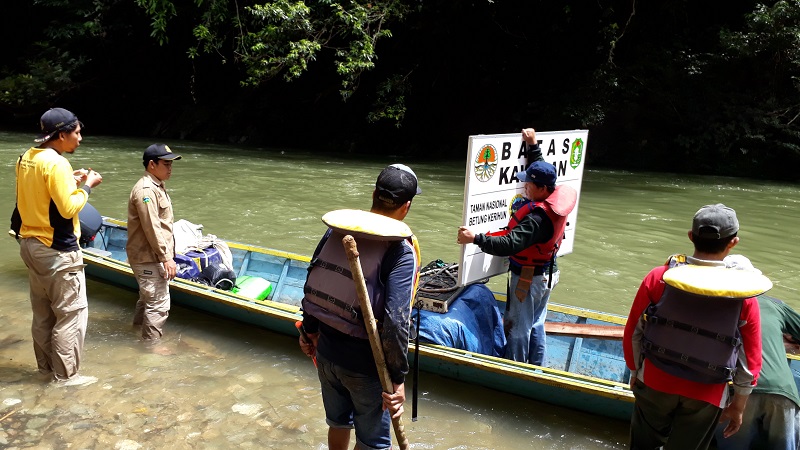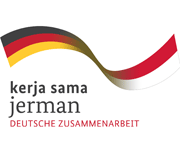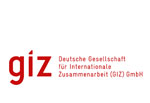FORCLIME
Forests and Climate Change ProgrammeTechnical Cooperation (TC Module)

Select your language

The 30th Session of the Man and the Biosphere Programme International Co-ordinating Council (MAB-ICC) UNESCO is conducted from 23 to 28 July in Palembang, South Sumatra, Indonesia. During the event, FORCLIME presents supporting the Lore Lindu Biosphere Reserve, one of biosphere reserves in Indonesia, which located in Central Sulawesi, on the exhibition as the side event of the conference. The booth presents activities implemented within the biosphere reserve area, including products such as chocolate bars and coffee that produced by women groups and the forest management unit, respectively.
Additionally, one of FORCLIME Senior Adviser, Dr. Ismet Khaeruddin, presented his paper ‘Community Empowerment towards Sustainable Resources Management’ on the first day of the international conference.
For more information, please contact:
Ismet Khaeruddin, Senior Adviser on Biodiversity Conservation

The Samarinda Environmental and Forestry Education and Training Center (BD LHK) together with FORCLIME conducted a coordination meeting to prepare its 2019 Forestry Training Programme on 6 July in Samarinda. The meeting is a follow up action after the training needs assessment which was held in June. The objective of the meeting is to build synergy and harmonization of human resource development capacities of forestry programmes in East Kalimantan. The meeting was attended by 30 representatives from the Province Forest Service (including the Forest Management Units-KPH), the Province Environmental Agency, the Technical Implementation Unit of the Ministry of Environment and Forestry in East Kalimantan and other related institutions (GGGI, FORCLIME, WWF-Indonesia and Indonesian Forest Concessionaire Association/APHI).
During the meeting, FORCLIME’s resource person reminded all participants on the priority training topics that have been set during the training needs assessment for human resources for the East Kalimantan KPH in 2017. The topics included forest planning, social forestry, KPH business development, climate change mitigation, managerial and administrative tasks. The meeting revealed interesting information during the mapping of training activities in 2018 and 2019, such as:
Since there are some institutions that support human resource development activities in East Kalimantan, the participants agreed on further meetings to coordinate thematic training programmes, aiming to have effective and efficient training implementation. In addition, to ensure the sustainability of the capacity building programmes undertaken by different institutions, they agreed to involve the Samarinda BD LHK in the training implementation.
For more information, please contact:
Tunggul Butarbutar, East Kalimantan Province Coordinator
Edy Marbyanto, Strategic Area Manager, Human Capacity Development

In July 2018, Forest Management Unit (FMU) Kapuas Hulu Utara, Betung Kerihun National Park Administration (TNBKDS) together with FORCLIME program conducted an organisation and methods study along the Embaloh River in order to assess the effort of boundary demarcation along riversides. Therefore, three border signs were placed at two different locations on the border between FMU and National Park in a remote part of the district.
The working-time study found that for a 6-men work team, at least 40 minutes to one hour is required to transport material and to install one boundary demarcation sign. The main reasons for this are the challenging terrain conditions along the Embaloh River (steepness, vegetation, etc.), which also make transportation of material difficult. This must be taken into account in future similar activities.
The number of border signs that can be installed per day mainly depend on
• Access routes (distances, boat load).
• Distances between individual boundary points and accessibility by the river.
• Terrain conditions (inclination, vegetation, need for free cutting of sight lines, etc.).
• Weather (occupational safety, water level, etc.).
The existing canoes as well as the terrain conditions limit the maximum size of the border signs (1.5 x 1 m), which must be big enough for visibility from the river.
In the future, FMU Kapuas Hulu Utara and the National Park Administration plan to install further border signs at other rivers along the long border area and strengthen their cooperation in field activities.
For more information, please contact:
Moritz Zetzmann, Development Adviser for Forest Management Unit
 |
Supported By: |
  |